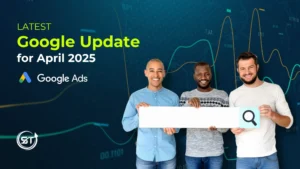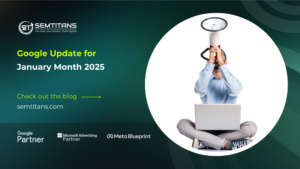
Digitalization has become an innovative trend as modern digital marketing is getting more advanced and competitive with the evolution of technology. As per digital marketing consultant, businesses now have real-time access to vast amounts of data about their customers, products, and competitors. Moreover, SEO is a method that helps increase the amount of traffic visiting your site by making it more visible in search results. You can also gain insight into what content is attracting visitors to your website, helping improve your website and increase conversions. The bounce rate as a part of SEO indicates how many visitors leave your site immediately after arriving. It’s essential to understand this number because if it’s high, there could be a problem with the design or content you’re unaware of.
Table of Contents
ToggleSo, what is the bounce rate?
Bounce rate is a metric commonly used to measure your landing page’s effectiveness by defining the percentage of users who visit one of your website’s pages and then depart from that page in less than 30 seconds without taking action. Bounce rate helps understand the audience retention and engagement of your site. It indicates how many visitors are not making a single page view or scrolling down and how many users are sharing the link or visiting again after the exit from the site.
If too many users leave your site without taking any action, it may be because your site is challenging to navigate or lacks relevant content. A high bounce rate also indicates that customers didn’t find what they were looking for and therefore have no reason to stick around.
What Causes a High Bounce Rate?
A high bounce rate indicates that the visitor is not finding what they are looking for on your website and therefore takes no further action. A high bounce rate can result from various problems, including poor design, slow page load time, or confusing navigation. High bounce rates look bad and are a sign that Google is not happy with your site either.
Why Is It Important to Control Bounce Rate?
It is essential to control bounce rate because it can impact your search engine rankings. A high bounce rate is bad, which means that while you may be getting more traffic to your site, most of these visitors are not engaging with the content on your page; they’re just “bouncing off” and never returning, which means they’re not clicking any of your ads or buying anything from you.
Most important is that it’s a bad user experience. Users won’t stick around for long if you don’t give them content that’s interesting, relevant, and easy to use. They’ll leave your site as quickly as possible, which will cost you exposure, traffic, and sales.
As a website owner, it is essential to understand bounce rate metrics to track how well Google ranks you for a particular keyword. If you have a high bounce rate, you may need to update your site with fresh content so more visitors will want to stay on your site longer.
What’s a Good Bounce Rate?
A good bounce rate can mean a few things, depending on your industry and your site’s goal. A low bounce rate generally means users enjoy what they see and stay around for longer. It also means that users spend more time on your website, which could mean they find the content relevant to their needs.
The closer this number gets to zero, the more likely people will stay on your page and interact with it, indicating that your content is appealing enough to keep them interested.
Having a bounce rate that is too high can impact your search engine ranking. A bounce rate of 56% to 70% is on the high side, although there could be a good reason for this, and 41% to 55% would be considered an average bounce rate. An optimal bounce rate would be in the 26% to 40% range.
Some of the reasons for the high bounce rate are as follows:
Page Load Time
How long does it take for a page on your site to load? Does it have any effect on visitors? In simple terms, page load time measures how fast your site loads. The longer the load time, the more likely your visitors will abandon the page before it finishes loading. Fast sites are good for user experience and search engine ranking since pages that load fast have higher SERP rankings than those that take forever to load. It is also a key metric for evaluating the performance of your website. Bounce rate is an essential contributor to this metric. A high bounce rate can indicate that your site has problems that need to be addressed quickly.
Too Many Advertisements
Too many advertisements are one of the leading causes of high bounce rates. Too many advertisements on a webpage will cause visitors to bounce your page. Visitors will find another website that shows their ad less often, or they’ll leave your page and move on to one they find more appealing. It would be best if you tried to reduce the number of ads on your site as much as possible without reducing your income.
Annoying Pop-ups
Too many pop-ups can be annoying and significantly reduce engagement because they distract your website visitors before they experience the excellent content on your site. They might not be interested in the product or service they’re being offered, or they may get frustrated with the amount of advertising they are subjected to.
The bounce rate is often used as an online marketing term to refer to how many people leave a website when viewing only one page. When websites put up too many pop-ups, visitors will likely leave the site.
Unhelpful Content
Poorly written content is a significant factor in the bounce rate of your pages. If you have a high bounce rate, there’s a good chance that people are coming to your site and leaving without looking at any of your content. If visitors can’t easily understand what you are saying, they are more likely to leave your page and move on to something else. You have to understand that your content may need to generate interest among your audience, or it may be problematic. If your content is not compelling enough, they won’t stay on the site to explore or look further into it. Creating compelling content is essential to keep your audience engaged and encourage them to explore more of your site.
Website Design
Good website design is essential. A website that looks good but doesn’t work well will have a high bounce rate. This can lead to lower search rankings, organic traffic, and sales. However, it’s easy to focus on the aesthetics of a site and miss the most important aspect, the user experience.
A good website design is intuitive and builds trust with a user. A simple, clear, and easy-to-understand layout helps visitors quickly find what they need and return to your site and allows people who are not computer savvy to navigate your website quickly and easily. It is also a signal of quality, professionalism, and expertise, all critical elements in attracting visitors looking for products or services like yours.
Easy Navigation
Navigation is the first thing visitors see when they arrive at your site. It gives them an idea of what to expect and helps guide them through your website, like the content they are looking for, such as product descriptions and prices, without getting lost.
Navigation is essential to any website’s success. Good navigation keeps people on a site by guiding them through their experience easily.
Use Various Types of Content
A good website is that which offers variety. A reader will encounter many different types of content. With all of the content types available for use on your website, it’s essential to decide which ones fit best with your goals. Video can be a great way to communicate complex ideas interestingly and engagingly. It can also help you connect with potential customers more effectively if you are trying to build a community or blog following around your business. If you are selling products, high-quality photos can help make those items appear more appealing and eye-catching. They might also encourage people to make purchases. The variety in the content may reduce bounce rates.
Use Relevant Keywords
The most important thing to remember with content is that it needs to be relevant, valuable, clear, and concise so that the reader can easily understand what you are trying to communicate. The proper use of words, sentences, paragraphs, and headings will help to communicate to Google what the page is about. When you are writing your webpage, you should use relevant keywords that best describe the content on the webpage. The more relevant and accurate your keywords are, the more likely visitors to your page will be able to find what they are looking for, thereby reducing the bounce rate.
Target Relevant Audience
The website should aim for a niche audience and create niche content around that audience. By targeting too broadly, there is a greater chance of getting users who are not looking for your site’s features. When selecting your audience, try to determine the types of people you would like to be reading your content by considering their age range, interests, and who they are as individuals. A niche audience will mean a better match between what you have to offer and what your target users want.
Call-To-Action
A call-to-action (CTA) is a button, text, or another element on any website. The purpose of a CTA is to get the visitor to click on it in order to connect with you. When appropriately used, CTAs can effectively drive online traffic and leads for businesses.
CTA can be used for many actions, such as filling out a form, signing up for something, or buying something. To truly engage, you want your CTA button to be highly visible, easy to navigate, and ultimately compelling so that visitors are persuaded to click on it. Color, text, size, and placement create a compelling call to action. A strong CTA will keep users engaged with your website and increase the likelihood of making a purchase.
Broken Links
Broken links are a severe problem for any business that relies on its website as a central content repository. A large number of broken links will only create a poor user experience, leaving a visitor to a website dissatisfied and frustrated, and considerable drops in rankings and traffic because Google will penalize websites with many broken links.
Broken links on a website indicate broken pages or external resources (such as images, videos, and JavaScript files) that do not load. Broken links can have an impact on user experience and also cause a loss in site traffic. To prevent this, it is imperative to conduct regular link audits to check your site’s internal and external links. There are a few different ways to discover all of the broken links on a website, such as through Google Search Console or a site auditing tool.
Internal Linking Strategy
Links are essential in internal linking, but if you can’t successfully make them stand out, they have little value for the user. As a result, paying attention to how many links you put on a given page within the context of the overall site is essential. The goal should be to provide users with an excellent navigational experience and easy access to information where they expect it to be.
Internal linking is an important strategy for the success of your website and is linked to a different location within your website within the same domain and site. Internal links give users greater freedom to browse around sites and quickly get where they want to go. There are many benefits to using internal links that boost page visibility, increase traffic, and improve user experience.
Create a 404 Page
We have often seen a 404 error or page that cannot be found. What that actually means. 404 error occurred when a URL or its content, such as files or images, was either deleted or moved. It tells you that you have made a mistake and that an existing file cannot be found. This can happen because the website may have been restructured or due to a temporary glitch on the server.
404 page is a web page that displays when you enter an incorrect web address. The page should prompt users to redirect them to a relevant webpage instead of simply ending their session with your site. It helps lower user bounce rates by assisting them in finding what they’re looking for. With 404 you will also be able to provide any additional information, such as alternative web pages that may be available.
Publish New Content Frequently
It could be helpful to have a variety of content on a site but be careful not to overwhelm your users with too much content. Keep the content relevant and consistent by frequently updating, making it easy for people to find the information they’re looking for, and keeping your audience engaged and happy.
The amount of content you create will reflect how much time and money you want to invest in your website by having fresh articles and consistent content that help keep your site stand out and build trust. Users can be kept returning when they see updates on the website regularly, which can be helpful in convincing people to visit and stay on a site.
Utilize Google Analytics & Other Tools
There are many tools out there for you to track user engagement on your website. Google Analytics is one such excellent tool that can help you define and understand your users’ behavior through powerful engagement reports. It tracks how much time users spend on your website, whether they bounce and leave or stay on the page, which pages they view on your site, and what their bounce rate is.
Wrapping up
Website design and development services and SEO service providers can identify that great content is the key to a website bounce rate. To create compelling, original, and reliable content, you must have a solid strategy.
You can easily understand how to decrease your bounce rate from the above blog post. It is also handy to understand how to reduce your bounce rate to improve your website user experience. So, make sure you implement these strategies and see the results for yourself.
Also read: 7 Tips to Understand Elementor Page Builder for Absolute beginners












